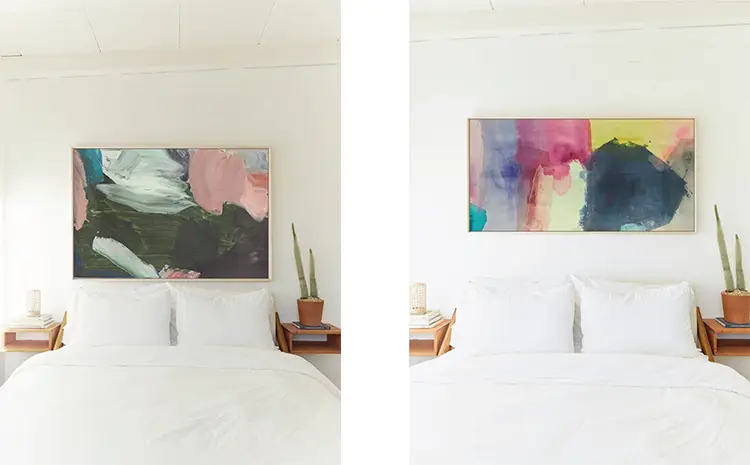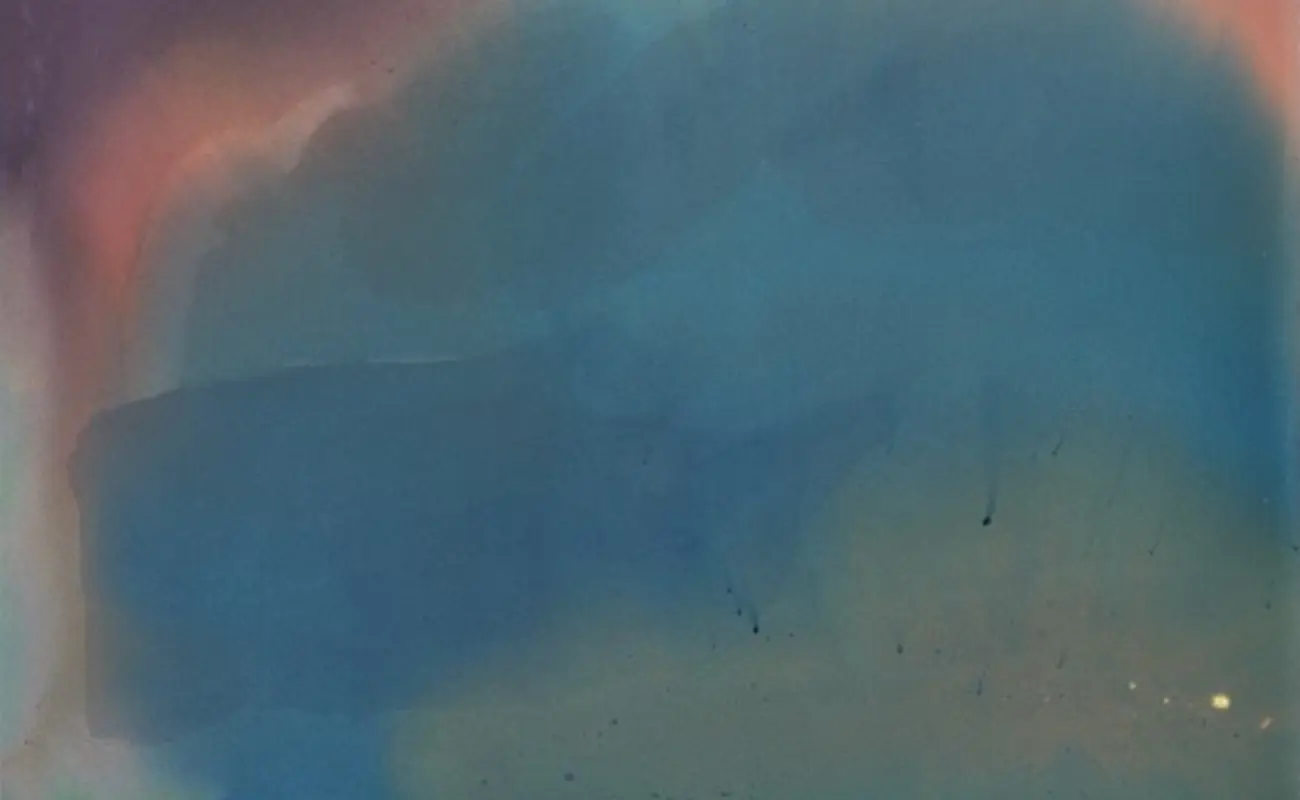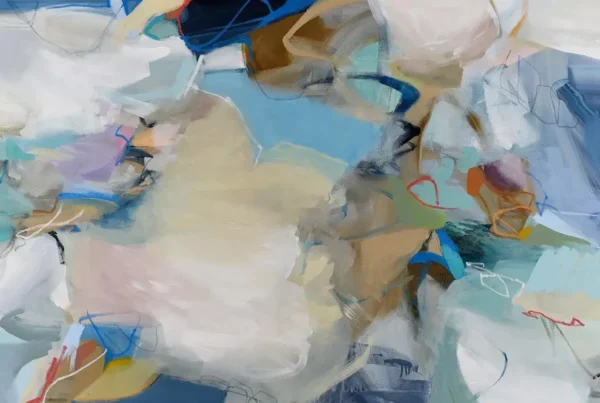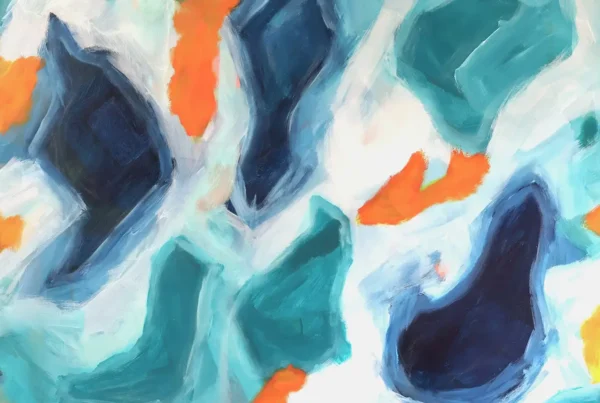The Architecture of Feeling
Emerging as one of the most striking voices in contemporary abstraction, Maja Długołęcka creates paintings that resonate with an emotional charge not easily articulated through words. Born in 1992 and currently based in Los Angeles, Długołęcka is a self-taught Polish-American artist who has refined a distinctive visual language grounded in gestural mark-making, soft washes, and atmospheric color. Originally from Portland, Oregon, she brings a design-savvy sensibility to her painting, informed by her past in visual design and music. These roots contribute to the rhythmic quality of her brushwork and the spatial fluency of her compositions. Each canvas she creates functions as a visual distillation of personal impressions—an intuitive record of fleeting states of mind and ephemeral observations.
Długołęcka’s paintings are guided by instinct rather than strategy, allowing each layer of pigment to evolve organically. Her canvases oscillate between boldness and subtlety, often integrating swaths of negative space that act as pauses between expressive gestures. In her more gestural pieces, powerful strokes in organic tones—indigos, mossy greens, and blushing pinks—suggest a nonverbal dialogue with nature, filtered through abstraction. These works, while reminiscent of Abstract Expressionist traditions, are softened and humanized by a quiet lyricism that distinguishes them from the historical canon. They contain emotional grit but are devoid of ego, inviting the viewer into moments of intimacy rather than confrontation.
Conversely, her more ethereal pieces invoke an almost spiritual quiet. In these paintings, diluted pigments are applied in translucent layers over raw linen, creating a haunting ambiguity of space and form. They evoke natural phenomena—fog rolling across an open plain, or the sky just before dusk—without veering into representationalism. These works extend a quiet invitation to the viewer, asking for pause and presence. Her intuitive process brings forth an honesty that is deeply felt, as each piece is linked to specific moments from her life. Rather than keeping a written journal, Długołęcka titles her works with fragments of thoughts recorded at earlier times, anchoring each composition to a unique emotional memory.
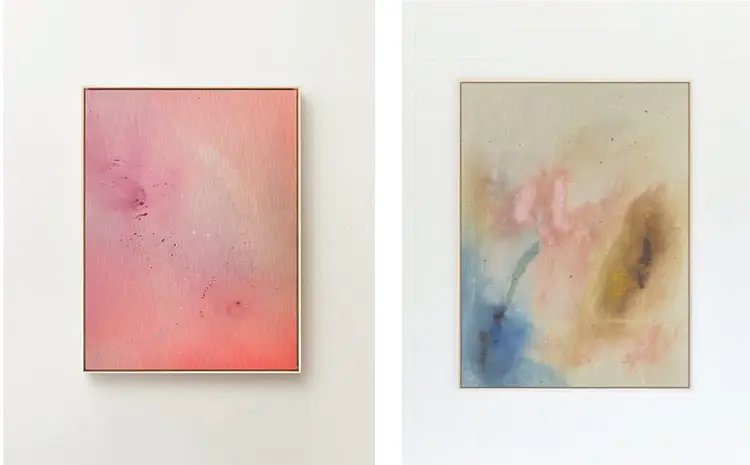
Maja Długołęcka: An Abstract Language of Self
Długołęcka’s practice is both an act of self-inquiry and a commitment to the physicality of painting. Her canvases often contain multiple identities, captured through layers that reveal and obscure in equal measure. Texture plays a critical role; whether through the use of thick pigment, diluted washes, or the rawness of exposed linen, her surfaces speak in tactile volumes. The energy she imparts into her brushstrokes is tempered by a spatial awareness that keeps each piece from tipping into chaos. This equilibrium between energy and restraint reflects her interest in dualities—strength and softness, spontaneity and reflection, control and surrender.
The conceptual undercurrent of her work lies in its relationship to memory and time. Długołęcka resists linear narratives, instead favoring fragments—glimpses of emotional terrain rather than full maps. This approach is best understood in how she titles her work, borrowing phrases from past recorded thoughts. In doing so, she positions her art as a temporal echo, one that captures the residue of a lived moment rather than a literal scene. Her paintings don’t explain; they feel. And in this emotional ambiguity lies their power. They function as meditative artifacts, suspending the viewer between recognition and abstraction, personal and universal.
Perhaps the most resonant aspect of Długołęcka’s work is its open invitation to introspection. Viewers are not asked to “understand” the painting in a traditional sense. Instead, they are invited to inhabit it—to trace the edges of its layers, to lose themselves in its pools of color, to confront whatever emotion it evokes. This insistence on emotional presence over intellectual resolution distinguishes her practice in a contemporary art landscape that often prizes concept over sensation. In Długołęcka’s work, feeling takes precedence. It is a quiet rebellion, a resistance to over-explanation, and a call toward inner awareness.
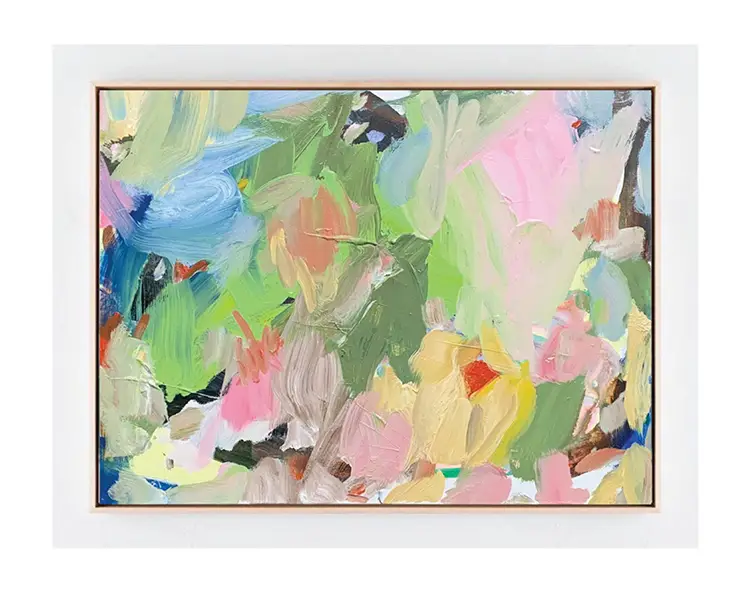
Rewriting the Gallery Model
Beyond her work as a painter, Długołęcka is reshaping the ecosystem in which contemporary artists operate. As the founder and director of Lobster Club, she has launched an artist-first collective that prioritizes creative autonomy and equitable representation. Established in Los Angeles, Lobster Club functions as a hybrid space—a gallery, a residency, and a community hub. The initiative arose from Długołęcka’s personal dissatisfaction with the traditional gallery model, which often leaves artists with only a fraction of their sales. With Lobster Club, artists retain 100% of proceeds from their exhibitions, a radical departure from the standard 50/50 split. This gesture isn’t just financial; it’s philosophical. It reframes the artist’s role in the exhibition process from passive participant to central protagonist.
The residency component of Lobster Club further underscores its commitment to nurturing artistic voices. The first retreat, held in October in California’s Yucca Valley, brought sculptor Lane Walkup into a desert environment designed to encourage both solitude and connection. Working within self-imposed material limitations, Walkup’s residency piece, As above, so below, explored themes of reflection and connectivity across spiritual and physical dimensions. The setting—six acres dotted with Joshua trees, a separate studio space, and shared meals prepared by culinary artist Allison Jacks—created an immersive context where artistic practice was holistically supported. It exemplified Długołęcka’s belief that creative expression thrives when the environment itself is generous.
Each Lobster Club event is conceived with the same artistic integrity that fuels Długołęcka’s own work. The debut Los Angeles show in November 2022 went beyond a conventional opening; it was a full sensory experience, complete with a seafood feast, curated wines from Hiyu Wine Farm, and a five-hour DJ set by SEES0. These curated happenings aim to collapse the divide between viewer and artist, art and life. In building Lobster Club, Długołęcka hasn’t just created a platform—she’s proposed an entirely new ethos for how art can be shared, experienced, and celebrated in community.
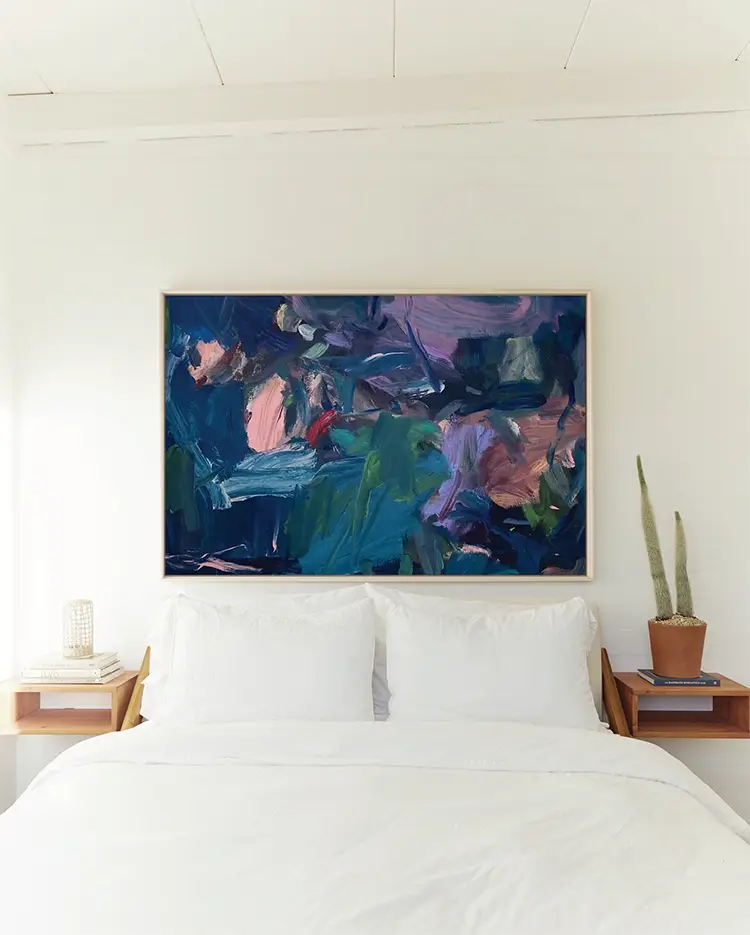
Maja Długołęcka: Freedom as Form and Function
At the core of Długołęcka’s creative and curatorial efforts is an unwavering belief in the necessity of artistic freedom. This conviction is not only apparent in the spontaneous nature of her own painting but also in the guiding principles of Lobster Club. She challenges the outdated structures that govern how artists access exposure, resources, and compensation. Rather than accepting these limitations, Długołęcka builds alternatives. Her model asserts that artists deserve more than a seat at the table—they deserve to set it. The flexible application process for Lobster Club’s residencies, which requires only images and a brief project description, further reflects her commitment to accessibility over bureaucracy.
What Długołęcka envisions for Lobster Club is less a business venture and more a living framework. It’s a growing space that expands with each artist who joins, each meal that’s shared, and each collaborative moment that emerges. Her leadership style embodies generosity—“first round is on me,” she says—and this spirit ripples through every element of the project. From the artists she selects to the sponsors and collaborators she brings into the fold, the emphasis remains on community over competition. By creating environments where artists feel both challenged and supported, Długołęcka proves that professional rigor and human warmth need not be mutually exclusive.
Her belief that “there are no rules” functions as both manifesto and invitation. It reflects her personal evolution as an artist who has forged her own path without institutional backing and her commitment to fostering that same courage in others. Whether on canvas or through Lobster Club, Długołęcka insists that the structures we live and work within are not immutable—they are changeable, malleable, and open to redefinition. In her world, art is not merely made; it is shared, celebrated, and sustained through collective imagination.
